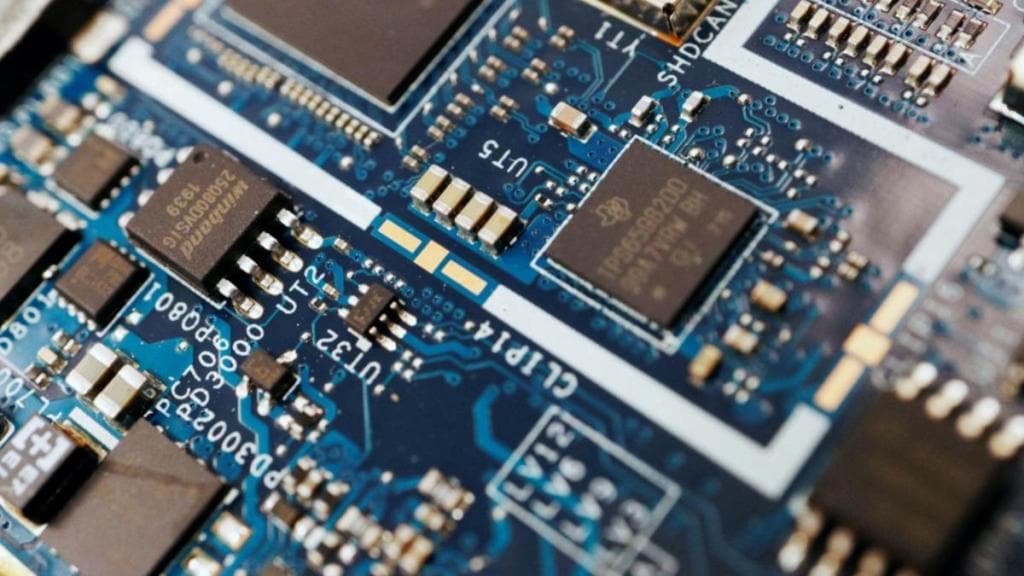The government’s nod to three semiconductor projects worth Rs 1.26 trillion in the country is expected to contribute significantly towards increasing the domestic value addition in the electronics, telecom, automotive, among other segments, as well as building supply chain resilience, several industry executives told FE.
The same assumes significance in the sense that with the first semiconductor fabrication plant, India is now present across the complete value chain of semiconductor ecosystem which includes semiconductor design, assembly, testing, marking, and packaging (ATMP), and fabrication. The same will have a ripple effect on the downstream industries such as automotive, electronics, telecom, industrial, and other businesses that will be able to use made in India chips, thereby reducing the import bill.
Value addition is where the domestic component is high when a made-in-India product is sold.
A simultaneous work on building the complete ecosystem of semiconductors including right talent, technology for fabrication and ATMP, research and development, along with the upcoming production-linked incentive scheme (PLI) for components is seen benefiting the country, experts said.
“Value addition will depend on products and the range of chips made. It could go from 10% to 20%,” said Ajai Chowdhury, founder and chairman of EPIC Foundation, and founder HCL.
In a recent interaction with FE, IT secretary S Krishnan said that getting a 30-40% of the value chain, will mean that India will be an important player in the value chain.
On Thursday, the government approved the country’s first Rs 91,000 crore semiconductor fabrication proposal by Tata Electronics in partnership with Taiwan-based Power Semiconductor Manufacturing Corp (PSMC). The other major projects that were approved include another one by the Tata Group – the Rs 27,000-crore ATMP project, and Rs 7,600 crore ATMP project of CG Power in partnership with Japan-based Renesas and Thailand’s Stars Microelectronics.
CG Power on Friday said, the company will hold a 92.3% in the joint venture, while Renesas and Stars Microelectronics will hold 6.8% and 0.9%, respectively.
“This new initiative from Tata Electronics will bring to India a portfolio of cutting-edge semiconductor technologies, advanced skill set and talent, and a network of semiconductor manufacturing suppliers and ecosystem partners, resulting in foundational development of indigenous semiconductor ecosystem in India,” said N Chandrasekaran, chairman of Tata Sons.
Including the Micron project which was approved last year, the total value of projects approved as on date stands at Rs 1.49 trillion.
When asked about big semiconductor companies not expressing their interest in India, Chowdhury said, “as per the current plan we need two silicon fabs of higher nodes. One has happened. We don’t necessarily need big names, we need big Indian names like Tata to lead. Rest will be a few compound semiconductor plants.” Chowdhury is also an advisor to the India Semiconductor Mission (ISM).
Rakesh Bhatnagar, director general of Voice of Indian Communication Technology Enterprises (VoICE) said, “automotive, electronics manufacturing, telecom manufacturing, industrial manufacturing, and other semiconductor consuming industries will see a quantum jump”. VoICE represents local design, research, and telecom solutions providers.
With regard to planning on semiconductor talent, the government is currently running courses in 104 institutions. The government has partnered with leading electronic design automation suppliers such as Cadence, Synopsys, and Siemens, which are providing tools to the institutes to help them with semiconductor projects. According to the industry body India Electronics & Semiconductor Association (IESA), over 20% of the world’s chip designers work out of India.
“While there are thousands of engineering students that graduate from Indian universities every year, the gap has been in what we call “design aware” talent – meaning, a gap in the book knowledge learned in the class and the skills that industry needs to tackle real-life projects,” said Jaswinder Ahuja, corporate vice president – International headquarters & India managing director of Cadence Design Systems.
According to Ahuja, institutes play an important role in making fresh graduates industry-ready and increasing their productivity by shortening the time to ramp up when they join companies. Ahuja is hopeful of getting quality talent in semiconductors emerging out of the institutions with the current curriculum.
In 2022, the government announced that they want to develop a pool of 85,000 trained engineers by 2027.
Pankaj Mohindroo, chairman of India Cellular and Electronics Association (ICEA) said, “By 2027, we expect the operationalisation of fab and OSAT (outsourced semiconductor assembly and test) units, aiming for over 10 fabs and 20 OSAT units by decade’s end”.
The government is aiming to become a major semiconductor manufacturing hub in the world by 2029. It expects the country to become the largest semiconductor consumer with a consumption of about $110 billion by 2028, after China and North America.


